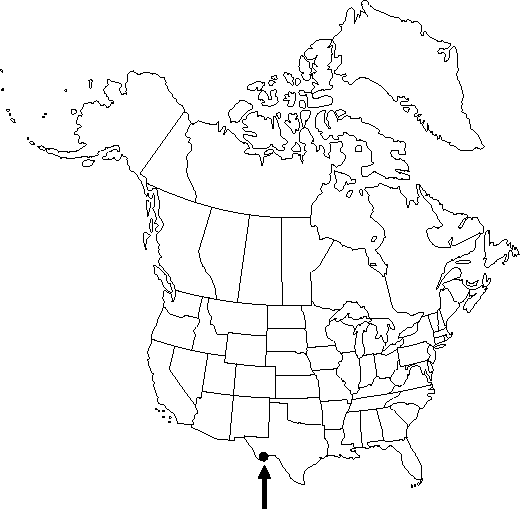Difference between revisions of "Quercus robusta"
Torreya 34: 119. 1934.
FNA>Volume Importer |
FNA>Volume Importer |
||
| Line 34: | Line 34: | ||
|distribution=Tex. | |distribution=Tex. | ||
|discussion=<p>Of conservation concern.</p><!-- | |discussion=<p>Of conservation concern.</p><!-- | ||
| − | --><p>After describing this species, C. H. Muller later (1951, 1970) concluded that it represented a hybrid between Quercus emoryi and Q. gravesii. The extreme forms (e.g., the type specimens) of Q. robusta and Q. gravesii are easily differentiated, but these two taxa appear to occupy the ends of a morphologic continuum. Muller's recent view, however, is that Q. robusta deserves species status. The origin of this taxon is still worthy of study.</p> | + | --><p>After describing this species, C. H. Muller later (1951, 1970) concluded that it represented a hybrid between <i>Quercus emoryi</i> and <i>Q. gravesii</i>. The extreme forms (e.g., the type specimens) of <i>Q. robusta</i> and <i>Q. gravesii</i> are easily differentiated, but these two taxa appear to occupy the ends of a morphologic continuum. Muller's recent view, however, is that <i>Q. robusta</i> deserves species status. The origin of this taxon is still worthy of study.</p> |
|tables= | |tables= | ||
|references= | |references= | ||
| Line 58: | Line 58: | ||
|publication year=1934 | |publication year=1934 | ||
|special status=Conservation concern;Endemic;Selected by author to be illustrated | |special status=Conservation concern;Endemic;Selected by author to be illustrated | ||
| − | |source xml=https://jpend@bitbucket.org/aafc-mbb/fna-data-curation.git/src/ | + | |source xml=https://jpend@bitbucket.org/aafc-mbb/fna-data-curation.git/src/8f726806613d60c220dc4493de13607dd3150896/coarse_grained_fna_xml/V3/V3_925.xml |
|genus=Quercus | |genus=Quercus | ||
|section=Quercus sect. Lobatae | |section=Quercus sect. Lobatae | ||
Revision as of 17:20, 18 September 2019
Trees, deciduous, to 13 m. Bark brown or black, roughly furrowed. Twigs dark reddish brown, 1.5-2.5 mm diam., densely pubescent or glabrate. Terminal buds glossy light brown, acutely ovoid, 4-7 mm, glabrous or pubescent on apical 1/2. Leaves: petiole 5-20 mm, pubescent or glabrate. Leaf blade acutely ovate to elliptic, widest at or proximal to middle, 55-120 × 20-50 mm, base cuneate to rounded or subcordate, margins with 6-8 teeth or shallow lobes with rounded sinuses, rarely entire, 1-10 awns, apex acute or attenuate; surfaces abaxially glabrous except for small axillary tufts of tomentum or pubescent along midrib, adaxially glabrous or persistently pubescent near base and along midrib. Acorns biennial; cup deeply cup-shaped, 6-9 mm high × 8-12 mm wide, covering 1/4-1/3 nut, outer surface puberulent or glabrate, inner surface uniformly pubescent, scales tightly appressed, acute or attenuate; nut oblong to broadly ellipsoid, 10-22 × 7-10 mm, glabrate, scar diam. 3.5-4.5 mm.
Phenology: Flowering spring.
Habitat: Moist wooded canyons in Chisos Mountains
Elevation: 1500 m
Discussion
Of conservation concern.
After describing this species, C. H. Muller later (1951, 1970) concluded that it represented a hybrid between Quercus emoryi and Q. gravesii. The extreme forms (e.g., the type specimens) of Q. robusta and Q. gravesii are easily differentiated, but these two taxa appear to occupy the ends of a morphologic continuum. Muller's recent view, however, is that Q. robusta deserves species status. The origin of this taxon is still worthy of study.
Selected References
None.

